Beach director says Frisbees are fine
February 9, 2012
Santos Kreimann says he has nothing against Frisbees at the beach—honest. And it’s OK with him if you want to toss a football along the shore, too, as long as you do it responsibly.
That’s why the county’s Beaches & Harbors director was baffled Thursday to find that what his department views as a liberalization of the rules for beach recreation is being widely misinterpreted to mean that Frisbee- and football-throwing is now subject to a $1,000 fine.
Not so, Kreimann says. After years of outright prohibition, a new ordinance which received final approval this week spells out for the first time the conditions under which Frisbees and footballs are allowed on county beaches—basically, in the off-season, or with a permit or permission from the lifeguard.
For years, he said, that kind of recreation had been outlawed altogether “to prohibit some knucklehead from acting like an idiot on the beach.”
The Frisbee flap has received big play on the airwaves and the Internet. The Drudge Report headlined an incorrect report by a local TV station: “LA County Approves $1,000 Fine For Throwing Football, Frisbees On Beaches.” Inquiries have poured into county offices from reporters as far away as London. The Los Angeles Times provided a factually accurate counterpoint to the coverage with an article headlined: “Ball playing, Frisbee tossing now allowed on L.A. County beaches.”
The new ordinance does give the county the right to ticket Frisbee scofflaws, like people who persist in throwing into large summer crowds, or when asked not to by a lifeguard. The first offense is $100—an amount set by the California Government Code. (Read the department’s statement on the ordinance here.)
Still, Kreimann doesn’t expect many citations will be issued.
“We don’t ticket anybody for throwing a ball on the beach, as long as they’re doing it responsibly,” he said.
As for those new $1,000 fines you may have heard about: yes, they’re in the ordinance but they apply to only a few kinds of misbehavior.
Those include nudity, shooting weapons and swimming or surfing during hazardous conditions or in prohibited areas.
The revisions to the ball-playing section of the ordinance were prompted in part by the growing popularity of sports like beach tennis and beach soccer, which are now permissible under certain conditions.
Posted 2/9/12
L.A.’s ballot box language boom
February 8, 2012
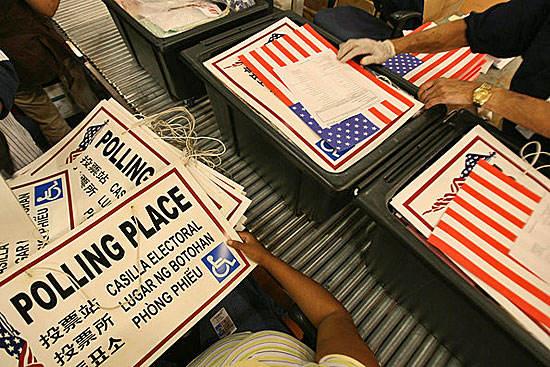
From Bengali to Thai, L.A. County voting officials are brushing up on some new languages for voters.
The nation’s most linguistically diverse ballot is about to offer even more ways to say “I voted.”
This June, when the polls open for the 2012 primary elections,Los Angeles County voters will be able to cast ballots in three new languages and receive oral translations in two more.
The addition of written voting material in Hindi, Khmer and Thai, and the planned recruitment of poll workers who can give bilingual assistance in Gujarati and Bengali, will bring to eleven the number of languages—other than English—in which L.A.County citizens will be able to vote.
Ballots and voting literature have been available for at least a decade in Chinese, Japanese, Korean, Vietnamese, Tagalog, Spanish and English. Registrar-Recorder/County Clerk Dean Logan says the additional voting material and recruitment could cost up to $1 million, but is necessary to comply with the federal Voting Rights Act.
That law generally requires language assistance for voters when a non-English-speaking minority exceeds 10,000 voting age citizens or 5 percent of a jurisdiction’s electorate.
“It’s a federal mandate that unfortunately does not come with federal funding, so we have to absorb it into our own budget,” says Logan. “It’s a challenge, but it’s also a great opportunity to ensure that we’re getting information to people in ways that they can access and comprehend.”
Efrain Escobedo, executive liaison forLogan’s office, attributes the need to a number of factors, including an increase in the number of naturalized citizens from India and Southeast Asia, and the migration of Asian-American voters from other states. Escobedo added that this year’s mandate required extra analysis because it was issued not by nationality, but by ethnicity and race.
“They gave us two categories—Asian Indian and ‘Other Asian Non-Specified,’ ” says Escobedo. “But India has over 122 recognized languages and 22 official languages. So when you tell us ‘Asian Indian,’ that doesn’t really help.”
Meanwhile, a search for non-Indian “other” Asian groups that weren’t already getting bilingual assistance yielded more than 80,000 residents of L.A. County with a half-dozen different national origins.
Eventually, Escobedo says, county analysts narrowed the list with the help of targeted census data, community groups such as the Asian Pacific American Legal Center and the Artesia-based South Asian Network and analysis from the Center for the Study of Immigrant Integration at the University of Southern California.
In addition to leading to the new languages on the ballot and in polling places, the county’s research yielded a rough sketch of the county’s dynamic immigrant populations. For instance:
- Los Angeles County now has more than 1.35 million people who identify themselves as Asian.
- The county’s largest Asian community is non-Taiwanese Chinese, which represents nearly 372,000 people or about 27.5 percent of the Asian community.
- Filipinos run a close second with nearly 329,000 residents, or about 24.3 percent of the county’s Asians. Another 216,000 or so residents are Korean, making up about 16 percent of the Asian community.
- More than 76,000 county residents identified themselves as Asian Indian in the 2010 Census, representing roughly 6 percent of the county’s overall Asian population. More than a third were naturalized citizens.
- About 20,000 of the county’s Asian-Indians are registered voters and more than two out of three have a college degree. The vast majority reported fluency in English, but about one in ten said that they don’t speak it well.
- The county’s immigrant population now includes more than 32,000 Cambodians, 23,000 Thais, 10,000 Indonesians, 9,000 Pakistanis, 6,100 Sri Lankans and 3,000 Laotians.
- Four out of every ten Cambodians are naturalized citizens, and more than a third of the county’s Cambodian population is registered to vote. But nearly 40% of Cambodians over age 25 in the county lack a high school diploma, and a third of the county’s Cambodian population speaks English poorly or not at all.
- The county’s Thai community also reports a 42 percent rate of naturalization. But only about 25 percent reported poor skills in English and more than four in ten have college degrees.
- Los Angeles County’s Thai communities are clustered in Cerritos, Glendale, L.A.and Long Beach. Cambodian clusters can be found in Long Beach, Signal Hill, Lakewood and Pomona. Meanwhile, Asian Indians are concentrated in Artesia, Cerritos, Diamond Bar, Walnut and L.A.
Posted 1/31/12
Looking out for shelter pets
February 8, 2012
The Los Angeles County Board of Supervisors this week weighed in on a narrow-but-emotional debate over euthanasia in animal shelters, urging the governor not to repeal a suspended law requiring shelters to wait more than three days before euthanizing abandoned pets and strays.
The mandate, suspended since 2009, is one of more than 30 that Gov. Jerry Brown has sought to eliminate in the wake of the state’s budget crisis.
Signed into law in 1998 by Gov. Pete Wilson, and named for its sponsor, former Santa Monica state senator Tom Hayden, it has extended the lives of lost and stray animals by requiring shelters to hold them from four to six days, rather than the 72 hours under the prior law. Local governments are supposed to be reimbursed by the state.
As California’s economy has struggled, however, the shelter law has been a target. In 2004, Gov. Arnold Schwarzenegger briefly tried and failed to repeal it, and five years later, it was suspended as part of a deal to balance the state budget. At the time, animal rights groups feared that shelters would begin euthanizing animals more quickly, but they continued to abide by longer waiting periods, making up for the lack of state reimbursement out of their own budgets.
In Los Angeles County, for instance, the Department of Animal Care and Control has spent about $600,000 a year of its $33 million budget to hold animals for five days before euthanization, says Chief Deputy Director David Dijkstra.
“As long as we have the ability, we like to make animals available for adoption or owner redemption for as long as possible,” Dijkstra says, noting that the county impounds about 90,000 animals a year and euthanizes fewer than half of them.
Some animal rights activists have argued that Hayden’s Law has worsened conditions for shelter animals because so-called “rescue holds” by hoarders and well-intentioned but disorganized animal lovers force shelters to house aggressive and diseased animals for weeks at the expense of more adoptable pets who then end up being euthanized for lack of space.
The state also points to a 2008 report from the nonpartisan Legislative Analyst’s Office that found no proof that the Hayden Law had led to an increase in pet adoptions, and therefore recommended repeal.
Still, Brown’s proposal to save more than $23 million a year by taking the mandate out of the state budget has drawn a fresh round of protest from some pet lovers and animal rights groups. Hayden recently spoke out in a YouTube video, and the Humane Society of the United States this week asked members to write to Brown.
The Board’s response, led by Supervisor Michael Antonovich, a longstanding advocate for pet adoptions, took the form of a 5-signature letter asking that the law not be repealed.
Quantifying the local impact of Hayden’s Law has been difficult because so many variables are involved in pet adoptions. For example, in recent years, Dijkstra says, shelters have become more crowded because owners have had difficulty caring for pets in this economy. Moreover, many of the 40,000 or so animals euthanized each year in county shelters are animals such as feral cats that can’t easily be placed for adoption.
However, he notes, by the most available measure—dog impounds—the suspension of Hayden’s Law has not increased euthanasia. In 2008-09, the county impounded 45,903 dogs, with 54 percent adopted or returned to their owners. In 2011-12, the projected number of impounded dogs stands at 48,823, with 57 percent returned or adopted.
About 80 percent of pets are claimed by their owners within the first three days, he says, but last year, about 1,100 lost pets were reunited with their owners on their fourth and fifth days in the shelter. In the past year, he adds, the county also has begun putting abandoned pets up for adoption sooner than they might otherwise have been made available.
“It’s very rare that an owner shows up after we’ve made a dog or cat available for adoption,” he adds, “but that has happened on a couple of occasions, and in those cases, the new owners are contacted and asked if they’ll give the pet back.”
Posted 2/8/12
Love, out of the box
February 8, 2012
Sick of dropping sixty bucks on a few measly roses? This year, treat your valentine to tens of thousands of live flowers on a romantic stroll through one of the breathtaking public gardens of Los Angeles County.
Love certainly won’t be the only thing blooming at Los Angeles County Arboretum & Botanic Gardens. Magnolias, the largest flower outside of the tropics, will be in full blossom. The gardens have more than 60 varieties. Magnolias have been cultivated for more than 1,400 years in China, where monks arranged them in temples to represent the female yin, purity and truthfulness. Orchids will also be showcased. Three thousand of the best ones will be brought in for display among the waterfalls of the tropical greenhouse.
The grounds at the arboretum are a big part of the attraction, from the ornate Queen Anne Cottage to the community garden. Resident peacocks, egrets and other wildlife will keep you company as you explore the lush environment.
If you plan on celebrating early—and if your valentine is a fungi fancier—the arboretum will host the popular Wild Mushroom Fair on Sunday, February 12. There will be displays, growing lessons and cooking demonstrations, along with mushroom-relevant books, collectibles and art for sale. For $10 per person, guests can attend a lecture from mushroom guru Gary Lincoff. Proceeds benefit the Los Angeles Mycological Society.
Over at Descanso Gardens, the camellia will take center stage. Descanso boasts the largest collection of camellias in North America, and the blossoms are at their very best during February. Cherry trees, magnolias and daffodils are also blooming.
Descanso has special activities planned for Valentines Day. For $25 a couple, a “Tram Tour of Love” will take lovebirds to all the best spots. You can reserve seats for a 3 p.m. or 4 p.m. excursion. That evening, a three course holiday dinner will be served in the Boddy House, a 22-room hilltop mansion with a panoramic view of the San Gabriel Mountains. Reservations are $78 per person.
If you’re looking for something a bit smaller-scale, the Italian terrace at Virginia Robinson Gardens will have camellias, pansies, violas and pink rock roses, all in bloom. The gardens are located on the historic estate in
Beverly Hills, built in 1911. Tours are by appointment only; call (310) 550-2087 to make a reservation.
Walking tours of gardens are a healthy and inexpensive alternative to the traditional consumerism of Valentine’s Day. But if the money you save still burns a hole in your pocket, consider showing some love to the Arboretum to help it fully recover from damage done by a strong Santa Ana windstorm in December.
Posted 2/8/12
Sisterhood of the traveling bikes
February 7, 2012

The movement to increase the number of women cyclists on L.A. streets includes Andrea Denike Martinez.
Andrea Denike Martinez still remembers the day she got back in the saddle.
It was Earth Day—April 22, 2010. For the first time since a bad bicycle accident fractured her skull and landed her in intensive care several years earlier, Martinez was ready to once again brave L.A.’s streets on two wheels.
Heading out from her Echo Park home, she was pumped up with environmental commitment—and “so nervous,” she recalled.
But moral support was also on the road that day. “I met another girl on a bike going that very same route.” She was a total stranger, but Katherine Gladwin was going in the same direction so they rode together to their jobs near Wilshire and Western.
They not only became fast friends, but started a small women’s cycling crew they dubbed the Bodacious Bike Babes. Since that first commute, they’ve organized and publicized group rides, volunteered at events like CicLAvia, and generally tried to encourage other women to take the plunge into an L.A. cycling world that remains overwhelmingly dominated by men.
Even though they may have felt alone out there at times, Martinez and Gladwin have plenty of company these days. On Wednesday, February 8, a coalition of women cycling advocates is set to gather in Long Beach to announce an ambitious goal: doubling the number of female bicyclists on Southern California streets within five years.
The initiative is led by a relatively new organization, Women on Bikes SoCal, which seeks to promote the “joy, beauty and benefits of bicycling for women.” Its campaign includes establishing the nation’s first women-only scholarship program for League Certified Bike Safety Instructors. (Information on supporting the initiative is here.)
One of the most visible faces of female cycling in Southern California, Long Beach Vice Mayor Suja Lowenthal, is among those backing the movement.
On a recent bicycle tour of her city, which is noted for its large and growing network of bike-friendly amenities, Lowenthal made it clear that dressing like Lance Armstrong—and riding like a Tour de France champion—are not required to join the cycling revolution.
“I want to wear my heels. I want to do all sorts of kinds of things that are about regular lifestyle,” Lowenthal said. “You don’t have to be the 50-mile-a-week spandex athlete. You can move about with your children and make it a very family-oriented, healthy, active lifestyle.”
In fact, Lowenthal thinks that the health and well-being of kids can be a powerful motivator in getting women to take up cycling. Childhood obesity is a “crisis of epic proportions,” she said, and there’s nothing like getting mothers on bikes to get everyone else onboard, too. “It is that green light: ‘Well, Mom’s OK with it,’ “ she said.
Still, if current statistics are any indication, there may be an uphill climb ahead.
The Los Angeles County Bicycle Coalition reports that only 16% of cyclists spotted during last year’s bicycle count were women—about the same percentage as in the previous count in 2009. A new report by the national advocacy group Alliance for Biking and Walking found that only 20% of those bicycling to work in Los Angeles are women—compared to 33% in Sacramento, 38% in Portland and a remarkable 49% in Memphis.
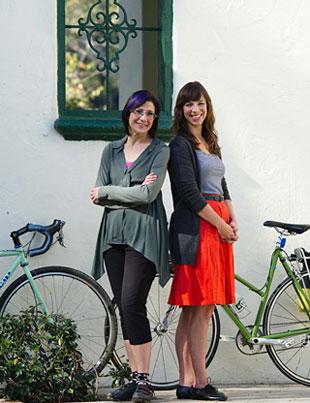
Jennifer Klausner, left, and Alexis Lantz of L.A. County Bicycle Coalition. Photo by Allan Crawford/Women on Bikes SoCal
Ask L.A. women cyclists, non-cyclists and would-be cyclists about the imbalance, and most are quick to sum up the problem in two words: too dangerous.
“A lot of it is people really are deathly afraid of cars, and the way people drive,” said Martinez, 33, co-founder of the Bodacious Bike Babes.
“It’s just too stressful being on the road,” added Kristen Schwarz, 28, who lives in East Hollywood and gave up her bicycle a couple of years ago after one too many encounters with speeding motorists. “It’s tough out there!”
Everyone, it seems, has a harrowing story or two.
“My first experiences in L.A. were pretty terrifying. I went down Wilshire. It was definitely a treacherous route,” said Gladwin, Martinez’s friend and co-founder. “My bicycling career in Los Angeles started in a pretty daunting fashion.”
She’s been struck twice by cars, the first time by a morning rush hour driver who mowed her down on Wilshire. “She stopped and she actually was complaining about heart palpitations because of the trauma she had experienced,” said Gladwin, 29, who was thrown to her knees in the collision. “I was intimidated but I wasn’t going to let that deter me.”
Magdalena Paluch, who interviewed women cyclists as part of a project to create a bicycling app while she earned her master’s degree in industrial design at Pasadena’s Art Center College of Design, said greater female involvement could lead to big things.
“I feel strongly that if anything will change, most of the time it changes because of the women. We are change agents,” she said. “Women are considered an ‘indicator species’ for biking and public transit because women are risk-averse. If you make it safe for women to bike, it’ll be safer for everybody.”
Cycling advocates agree. They say that creating more, and safer, facilities like “protected bike lanes”—in which riders are buffered from car traffic—and “bicycle boulevards” on slower-moving residential streets is the key to overcoming the perception and reality of dangerous L.A. streets.
Joe Linton, a CicLAvia consultant and longtime L.A. bicycle activist, noted that the gender disparity disappears in countries like the Netherlands, which has a highly developed network of bikeways and a culture in which cycling is considered a safe and commonplace way to get around.
“In very bicycle-safe cultures, women are actually the majority. In daredevil places, or places that are perceived as daredevil, like L.A., women are reluctant, and reluctant to go with kids,” Linton said. In Los Angeles, where men have long dominated the bike scene, it’s easy for experienced, hardcore cyclists to forget how women—and other less confident beginning riders—may view the challenges of the road, he said.
Advocates are increasingly pointing to women riders’ safety concerns as a way of advancing a broader agenda of making streets better for all cyclists and pedestrians, of all ages. “This is a growing issue,” said Alexis Lantz, planning and policy director for the Los Angeles County Bicycle Coalition.
In fact, the women’s safety argument has been made as part of a push for improvements in Los Angeles County’s Bicycle Master Plan, set to come before the Board of Supervisors in the weeks ahead.
Lantz said it also could be a factor as advocates press for more bicycle resources in the Southern California Association of Governments’ Regional Transportation Plan. And, on the federal level, she said, “Safe Routes to School” funding—which provides resources for many bicycle and pedestrian programs and is now threatened as part of the budget showdown in Washington—is another area in which women’s street safety concerns are a big part of the conversation.
Beyond the public policy arena, signs are everywhere that women are finally starting to make their move into the bike lane—at least a little bit.
Photos of bike-riding celebs like Zoe Deschanel, Hilary Duff and Vanessa Hudgens are all over the Internet, as are fashion-forward blogs such as Los Angeles Cycle Chic. Monday nights are reserved for women at the Bicycle Kitchen. Although nobody’s done a formal count, popular street-closing CicLAvia events seem to be bringing out large numbers of women. And young female activists are creating crews like Iron Unicorns, dedicated to creating “equality for women cyclists, both on the streets and in society.”
All those are valuable in building the women’s cycling movement, Lantz said.
“I think there is something that everyone can bring,” she said. “Cycle chic is a really great way of promoting cycling for some women. I really think that the more attention brought to cycling, the better.”
Posted 2/7/12
Ocean-friendly gardening starts here
February 6, 2012
Malibu made a prizewinning environmental “cleaning machine” out of a vacant lot that had been the community’s annual chili cook-off site. You don’t need to own a spread like Legacy Park, though, to help curb urban run-off.
Paul Herzog, coordinator of the Surfrider Foundation’s Ocean-Friendly Gardens Program, recommends “CPR”—conservation of water, permeability in your soil and retention devices such as rain barrels and rain gardens—to homeowners who would like to build water cleanliness into their landscaping.
And even small changes can help. Here are few:
Apply mulch. “It’s a simple thing to do, and it makes a big difference,” says Herzog. “Some areas even offer mulch from the city for free.” Mulching keeps weeds down, and, more importantly for the oceans, captures and holds water that might otherwise make its way down to the beach.
Redirect your rain gutter onto your landscape. Don’t let water wash over your roof and then send it directly into a storm drain. Turn your downspout or, if necessary, buy an attachment at the hardware store to send that water onto your lawn or garden, where it’ll do more good.
Reset your irrigation timers when you reset your clocks. You know how you spring forward and fall back for Daylight Savings Time? Well when you reset your clocks in the fall, adjust your irrigation to account for the rainier winter weather. And when spring arrives, set them again for the drier summer days.
Go native. Think about what naturally grows here the next time you landscape. Native plants don’t have to be dull. (Click here for ideas.) “Monarch butterflies journey from Canada to Mexico and there’s only one plant that baby Monarchs will feed on,” he says. “Milkweed. And some varieties are native to this place.”
Posted 2/6/12
Ramp delay, closure and more on 405
February 1, 2012
Activity’s buzzing all over the 405 Project these days, but work on one of the biggest—and potentially most traffic-confounding—near-term endeavors has been put off till May.
Work on the much-anticipated “flyover” ramps at Wilshire Boulevard, originally scheduled to start last year and then postponed until March, has been delayed again because of slower-than-expected progress in relocating a federal government utility line along Sepulveda Boulevard.
The westbound Wilshire on-ramp to the northbound 405 and the northbound 405 off-ramp to westbound Wilshire will need to be completely closed for 90 straight days so that workers can demolish and rebuild the ramps. The operation will later be repeated on six other ramps, with varying closure times anticipated. Kasey Shuda, acting community relations manager for the project, said the delay in getting started is not expected to affect the overall project timetable.
The prospect of long-running ramp closures at one of the busiest intersections in the nation has sparked concerns among those who live and work in the area. In the aftermath of Carmageddon, the upcoming work was dubbed “The Rampture” in the blogosphere, with many predicting far worse disruption than last July’s freeway shutdown because the ramps would be closed so long.
The organization FAST (Fixing Angelenos Stuck in Traffic) has suggested that offering free fares on Metro rapid bus line 761 would not only help alleviate jams but also could help turn some automobile drivers into bus commuters over the long term.
UCLA also has called on public transit agencies to offer reduced or free fares in the area while the ramp work is underway. In addition, the university is requesting extra traffic control officers along detour routes and other roadways likely to get heavy use during the closure.
Shuda said those ideas and others are now under discussion.
This week, meanwhile, brings the full closure of the northbound 405 between Getty Center Drive and the 101 Freeway for two consecutive nights so that the Mulholland Bridge can be shored up with a massive center supporting column. Details on the night closures taking place on Wednesday Feb. 1 and Thursday, Feb. 2, are here.
The column and other temporary supports will remain in place as the bridge’s south side is reconstructed. Then, sometime this summer, the north side of the bridge will be demolished in “Carmageddon II.” Specifics, including the date, have not yet been set.
For a closer look at what will be happening in all three of the project’s segments over the next 30 days, click here.
When completed in 2013, the project will add a 10-mile northbound carpool lane to the 405 along with other improvements.
Posted 2/1/12
Sounding off in style
February 1, 2012
Not all readings take place in small, independent coffee shops amid turtlenecks and fedoras. This Saturday, the chic Standard Hotel of West Hollywood will host “The Rattling Wall: Reading & Release,” a free literary event from PEN Center USA and Narrow Books.
The Rattling Wall is an L.A.-based journal of poetry, short stories and travel writing. Editor Michelle Meyering will emcee the release of the second issue, which ranges from Pulitzer prize-winning poet Yusef Komunyakaa’s foray into love (and hate) fiction to punk icon Henry Rollins’ rambling tales of travel life on and off tour.
To mark the occasion, Dana Goodyear, Katie Arnoldi, Graham Moore, Jon Sands and Martin Pousson will read their contributions. A book sale and signing will follow. Hors d’oeuvres will be served and a DJ will provide musical entertainment.
PEN Center USA is a Beverly Hills-based nonprofit organization dedicated to fostering, promoting and protecting writers worldwide. It provides a forum where diverse authors of the western United States can commune and collaborate.
The event starts at 7 p.m., February 4 at 8300 Sunset Boulevard. Valet parking is $6.
Posted 2/1/12
Big ideas, cool sounds at the museum
February 1, 2012
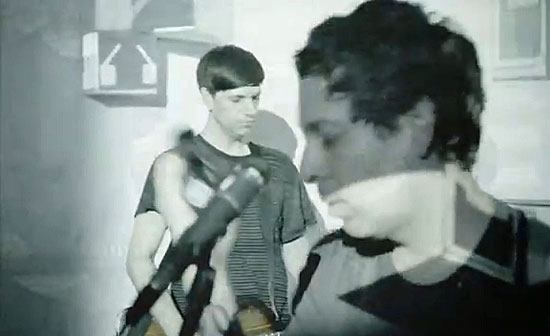
The Soft Moon will provide an artistic vibe for the latest installment of First Fridays at the Natural History Museum.
If you think science is dull or hopelessly unhip, a visit to First Fridays at the Natural History Museum may rock your worldview. With its formula of engaging lectures paired with cutting-edge tunes, the county-owned museum offers insights you can dance to.
Dr. John Harris begins the February edition with a tour of the museum called “A Brief Sprint through Human Evolution.” The “brief sprints” take place at 5 p.m., 5:30 p.m. and 6 p.m.
Then, at 6:30 p.m., biological anthropologist, primatologist and “Darwinian feminist” Amy Parish will lead a discussion titled “The New Science of Darwinian Feminism: Evolutionary Insights from Bonobo Social and Sexual Interactions.” Parish spent the last twenty years studying bonobos, one of the closest living relatives to people. Her discussion explores their unusual social and sexual interactions—females often dominate males and form their own relationships in the absence of kinship. She places that research in evolutionary context to shed light on human behavior.
After that comes some experimental music, starting at 8 p.m. The Soft Moon will perform its hypnotic, ethereal brand of post-punk. Light Asylum offers a fusion of Goth, industrial and synth pop sounds. Meanwhile, Julia Holter and Corey Fogel will bring artistic instrumental styles to the rotunda. KCRW DJs Anthony Valadez and Mario Cotto will provide danceable beats throughout the night amid the dioramas of the African Mammal Hall.
Admission to the full event is $18, and free for Universityof Southern California students. The museum is located at 900 Exposition Boulevard in Los Angeles. Parking is $10, or plan your trip with Metro.
Posted 2/1/12




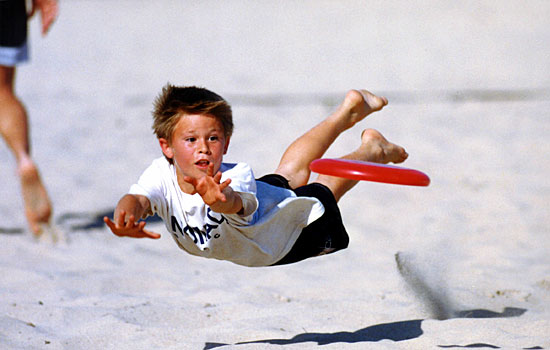

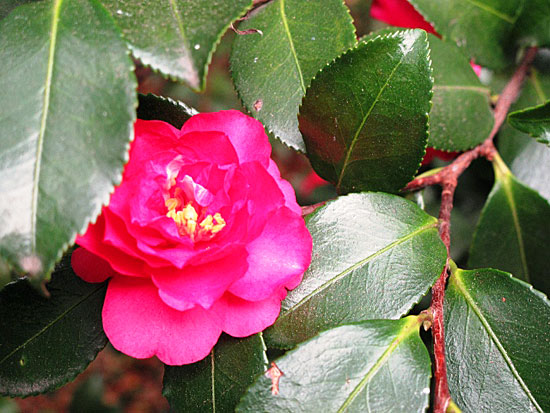
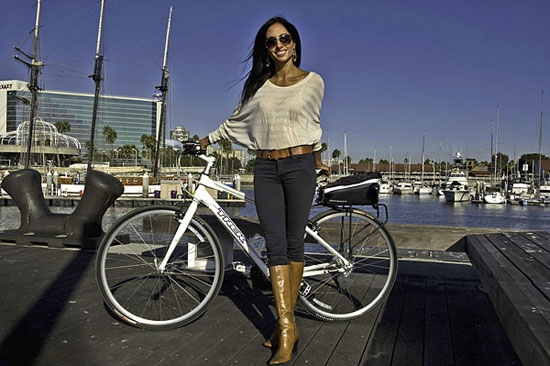
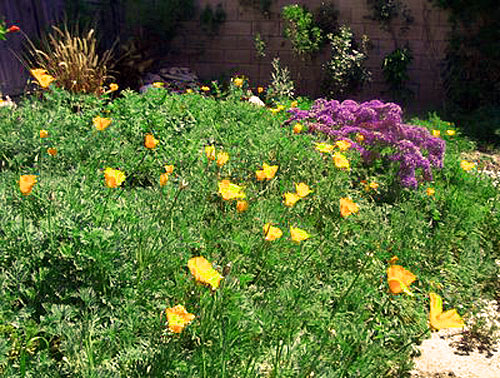

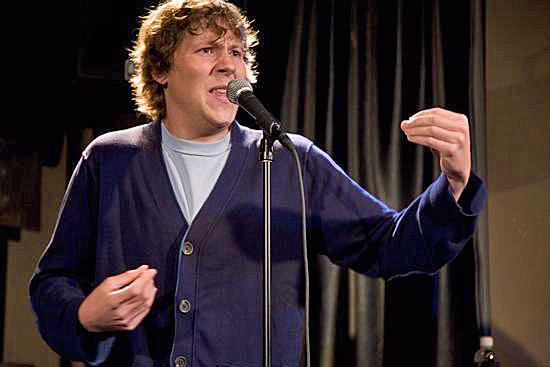





 Check for the latest closure information
Check for the latest closure information








